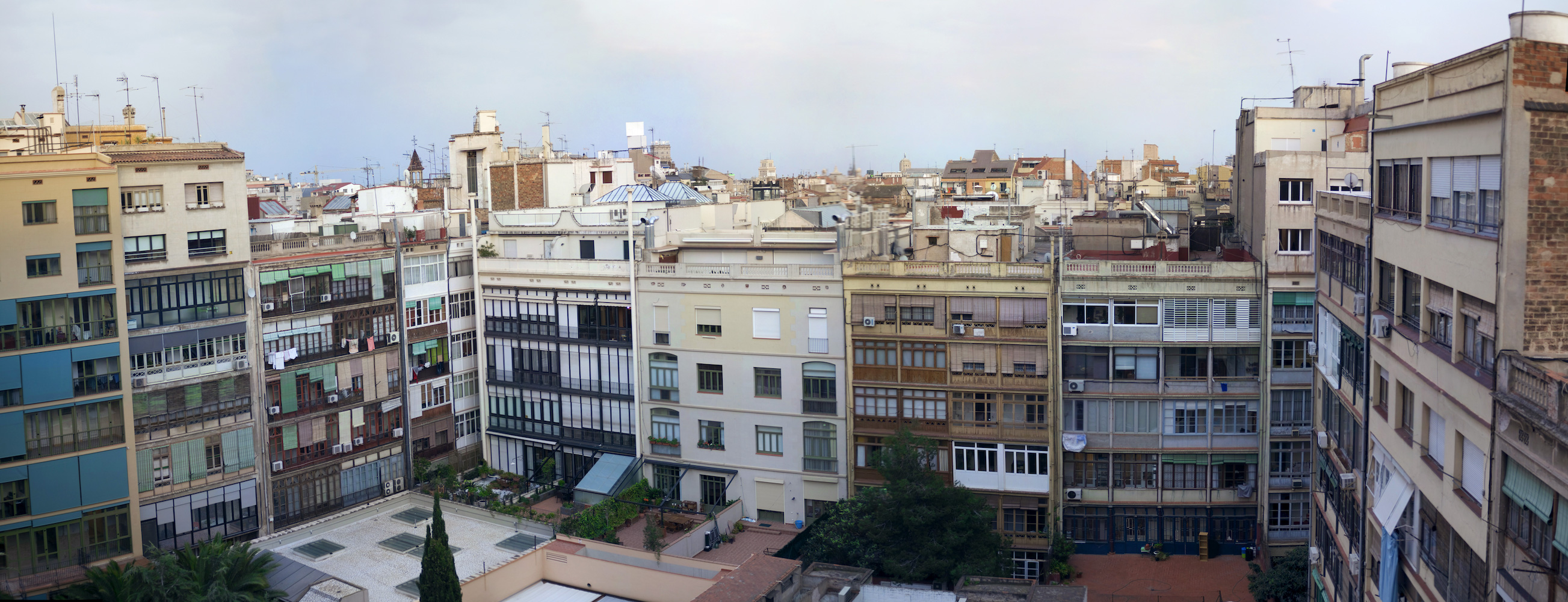Urban density is more complicated than you might think
Density is often seen as the cure for what ails our cities, our mental health, and the environment, and rightly so. Density is great for all those things. But density is also complicated. There is good density and not-so-good density. Staying in an Airbnb on the 37th floor of a Toronto highrise last week reminded me of why.
Townhouses, for example, are much denser than single-family houses, in the area of 4 times denser. If you look at a Brownstone-type unit with 3-4 floors it’s getting into low-rise territory.
Looking at low/mid-rise dwelling, you can get fantastic density levels. Barcelona’s Eixample neighbourhood for example is low/mid-rise (4-6 floors) and has a population density of 36,000/km². Manhattan is only 25,000/km².
 Eixample courtyard – flickr / Gerard Girbes Berges
Eixample courtyard – flickr / Gerard Girbes Berges
But pop/area isn’t the only way to measure, since different people will live in different amounts of space. FAR or Floor Area Ratio is pretty simple, if you have 1 floor that completely uses up the lot, that’s 1.0, if you have 1 floor that uses up half the lot that’s 0.5, if you have 8 floors on a footprint of half the lot that FAR=4. (Also called Floor Space Index.) Eixample is apparently at FAR=4.7. A lot of older high-rises, like the ones in the Durand neighbourhood in Hamilton, waste a lot of ground space (on parking lots and useless lawns) and so they don’t deliver the density you might expect.
And then the “quality” of the density. In order to have good placemaking, street life, people feeling connected to the street, there is a rule of thumb (practised in Europe) of no more than 7 stories. I wish I could find a scientific justification for this. Again the Eixample neighbourhood has a very active ground-floor life of shops and cafés and street furniture.
So if you can wind up with the same density at the end, but a much better human environment, the solution isn’t to build skyscrapers, it’s to build low/mid-rise buildings that go right to the street, and a great street life and urban space on the ground.
More reading: